The Legend of Zelda: Tears of the Kingdom Review – Score 9.5/10
Posted on June 17 2023 by Judy Cooper
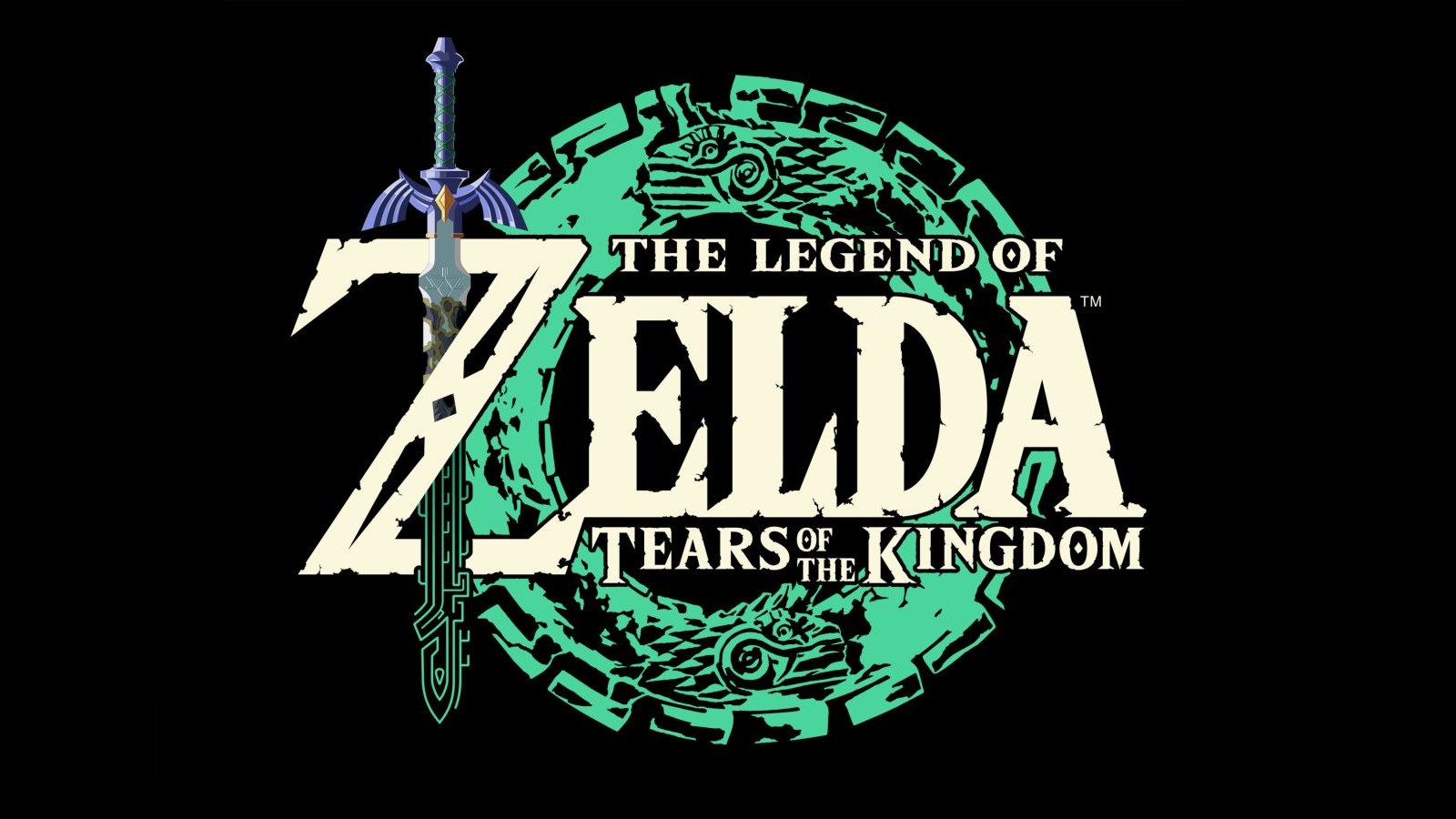
The Legend of Zelda: Tears of the Kingdom released May 2023, much to the delight of ever-patient fans the world over. Since its announcement in 2019, speculation was rife as to whether it would – or even could – improve upon the foundations its predecessor had set. Nintendo clarified that the series’ latest instalment would indeed take place on the same map that appeared in Breath of the Wild, which begged the question of what they could possibly do to shake things up in the next game. How could they expand on an already huge overworld? Would it be difficult to revolutionize the abilities and mechanics in the next title? What could be done to make combat even more exhilarating? And what should the Zelda community expect in terms of storyline and quest content? At last, we have the answer.
A World Revitalized
Players familiar with Tears of the Kingdom’s predecessor will know this map; its surface is a dream for any gamer seeking exploration. This game takes that attribute and expands upon it by adding even more dimension to its world. In doing so, the Hyrule that fans are so familiar with feels new once more. Although the basic geography is the same, the landscape features new flora and fauna, and is littered with brand new cave systems. Cliffsides that once offered no more than purchase for climbing now harbor networks of tunnels leading to treasures unknown. Caves and wells dot the land, calling for the player to delve ever inward to discover their contents. Once-peaceful mountaintops now host fearsome beasts to surprise those players who were more intimately familiar with Breath of the Wild’s landscape, and enemy encampments have been developed, meaning there is an array of different logistical ways to approach them. Whether it’s upgraded housing for a Boss Bokoblin and his troop, or a Battle Talus crawling with monsters, the overworld feels more interesting and alive for their inclusion.
Notably, the towns and villages have received some of the biggest makeovers in Tears of the Kingdom’s overworld. It’s clear that society has been rebuilding itself in the wake of Calamity Ganon’s defeat, and the Kingdom of Hyrule is experiencing real urban development as well as some environmental changes. The hustle and bustle of a new settlement is a welcome change that will pique the interest of players that exhausted the townships in Breath of the Wild. However, Tears of the Kingdom stops short in this regard, leaving you wanting more. Thankfully, the game makes up for the fact with growth in existing locations.
Hateno Village is the perfect example of development with its expanding borders and new buildings — not to mention a brand new local attraction that draws visitors from across the land. Meanwhile, Gerudo Town has adapted to withstand outside influences and harbors other intriguing elements to renew the player’s interest. While some changes to settlements are small, others are bigger, and this means a completely new vibe for well-known locales. The evolution of these spaces, whether it’s climate-related or through idustrialization, really makes the player feel like they have returned to a world that has experienced growth in their absence. This is a huge plus when immersing oneself in the game.
Developers didn’t stop at Hyrule’s surface though, and there are two additional areas in Tears of the Kingdom’s world! The fact that the Surface is littered with fallen chunks of rocky phenomena naturally draws the eye towards the Sky from whence it came, which is the first new level on the map. Sky Archipelagos dot the expanse of Hyrule’s skies. However, as they are arguably the most marketed aspect of this particular title prior to release, some might consider these islands to be a disappointment. Only sometimes do they feature Shrines and other significant inclusions, and on the whole prove to be much smaller than anticipated, with a few notable exceptions. More-often do Sky Islands take the form of a tiny puzzle or obstacle course that houses a small secret instead. On the flip-side, the archipelagos do offer a great change of pace from Tears of the Kingdom’s standard world traversal. There are indeed some breath-taking sequences associated with this, but largely these seem lackluster when compared to the game’s other massive planes.
With talk of massive planes, our attention turns to the second and final new level of the map — The Depths. If any other part of Tears of the Kingdom’s world felt huge, then by comparison, the Depths feels absolutely colossal for a number of reasons. Located deep underground, this area can only be accessed via chasms on the surface of Hyrule. Steeped in darkness, this subterranean landscape offers a different kind of intense challenge in traversal alone. Players are forced to light their own path as they proceed, regardless of whether they’re scaling a mountain or crossing a body of water. This area also heavily features puddles of a poisonous, dark substance called “Gloom,” which is highly toxic to Link should he touch it. And as if that weren’t enough, there’s the added threat of enemies old and new lurking in the stifling blackness too. The uniquely chilling atmosphere coupled with the mystery of the unknown truly makes The Depths one of the most standout pieces of new content in Tears of the Kingdom.
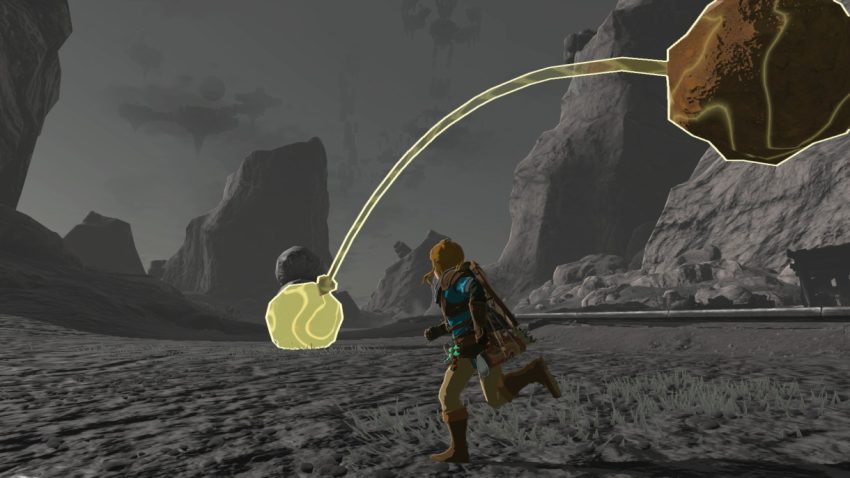
Abilities and Mechanics Break Gameplay Boundaries
Tears of the Kingdom boasts useful and practical new abilities that make for innovative gameplay. Displayed in an ability wheel, each ability will appeal to the player for different reasons. Exploration and combat can be approached in various different ways depending on the player’s preference in ability, meaning gameplay is more diverse than ever before. All abilities can be gained early in the game and serve to capture the spirit of creativity encouraged going forward, while simultaneously breaking the boundaries of every Zelda title we’ve seen before.
First and foremost, Fuse offers a catalog of weapon, shield, and arrow combinations, which comes in more than handy considering Link’s arsenal in the beginning of Tears of the Kingdom. This is only the tip of the iceberg when it comes to Fuse, though! More than just changing how a weapon or item looks, Fuse improves upon Breath of the Wild’s weapon durability system by augmenting a weapon’s properties as well. The results of these augmentations can lead to powerful and unexpected results. For example, attaching a Moblin Horn to a sword will increase that sword’s attack power, allowing the player to deal more damage. For those with unsteady aim, attaching a Keese Eyeball will almost guarantee a hit on an enemy from a distance. There are plenty of combinations to experiment with, especially when it comes to items not seen in previous Zelda titles. It’s important to note that Fuse doesn’t stop at attack, however. This ability has a functional element as well. Fusing shields with certain tools will allow Link to spring high into the air, or cross a distance at rocket speed. Furthermore, certain combinations and their effects really tap into “video game logic.” A minecart-infused shield will turn Link into a pro-skateboarder should the player decide to shieldsurf, and a beehive-infused shield will unleash a swarm of angry bees on an enemy if struck. There are countless hours of happy game time waiting for those who would seek the possibilities.
Ultrahand, however, is Tears of the Kingdom’s true triumph. It goes a step further than Fuse by allowing the player to pick up just about any non-stationary object in the game and attach it to something else. There’s definitely some practice involved in this ability, but luckily, there’s plenty of opportunity for that in the tutorial area and early hours of the game. Although you might start out by connecting logs into a makeshift bridge, eventually you’ll progress to creating functional vehicles like those seen in this title’s pre-release footage. From here, there are a staggering amount of ingenious possibilities with the use of Ultrahand, if only the player will put their imagination to it. Whether it’s a contraption for farming monster parts, or a giant robot to charge into battle on your behalf, there is endless fun to be had with these builds. However, Nintendo gives with Ultrahand, and then Nintendo takes away with it too. As much fun as the player might have with this ability, most toys don’t work without a battery — and Link needs just that to keep his creation going. Ultrahand builds usually require the power stored in Link’s Energy Cells to function; and once this depletes, you’ll need to wait for the meter to recharge or consume specific items to refill it. This can be frustrating if the player is making headway in-game all thanks to their latest construct, but it’s an understandable measure to ensure some challenge remains in the quest.
An extra ability that the player will find useful is Autobuild. It does exactly what it says on the tin, and will build your favorite Ultrahand contraptions in an instant. If you’ve built a particularly complex machine, Autobuild has the power to remember it. And if you set that machine to favorite, you can build it on the spot with no hassle provided you have a certain necessary material. As an added bonus, the player can collect schematics which allow them to create specific builds preloaded in the game. This function is particularly useful for gamers who can’t quite get to grips with Ultrahand, and ensures that no player is left behind in the experience (if they stumble upon the quest that awards it, that is).
The remaining abilities come in the form of Ascend and Recall. Ascend quite literally allows Link to ascend through the ceilings of buildings, caves, and other structures. This serves as the perfect respite from the time spent climbing to heights unknown, meaning the player can focus on everything else that Tears of the Kingdom has to offer. This will be particularly welcome to those who explored every height of Breath of the Wild’s map, and might only grow impatient in having to do so again. Recall allows the player to mess with the laws of time, meaning Link can reset the position of platforms and vehicles. This comes in very useful if you can’t figure out how to pass an obstacle as the game intends. Standing on a platform and using this ability to cross a pit or river of lava can be a quick fix when you just can’t figure out what else to do. Essentially, both abilities often offer a satisfying way to “cheat the system” in-game, without really cheating at all.
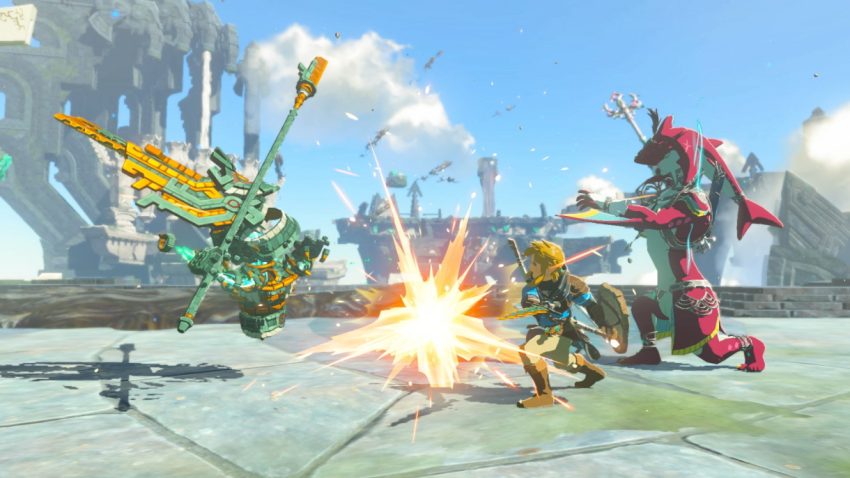
The Good Fight Gets Better
Most of the monsters from Breath of the Wild have returned in Tears of the Kingdom, but the game also reintroduces those seen in previous titles, as well as unveiling brand new entities at the same time. In-game events have emboldened enemy forces, and they appear across the map in varying forms of hostility. Stronger and more frightening monsters are itching for a fight earlier in the game, and they seem to withstand even more punishment than before. If that wasn’t enough of a challenge, those same monsters are doling out more punishment too. So, with combat difficulty increased, the player will need to get more creative with their attack plan. Abilities like Fuse, Ultrahand, Recall, and Ascend will lend a huge assist in the combat department, and they are even sometimes necessary to win a fight. Any of these elements can be used to help a player develop their own unique fighting style, whether that’s through finesse, stealth, trickery, or power.
A Frost Gleeok, for example, will rain ice upon Link, causing major damage. This enemy fights from both the ground and the air, and a moving target is not easy to hit with an arrow. The player can Fuse a Fire Keese Eyeball to their arrow and almost guarantee an elemental hit on this otherwise evasive beast while it’s on land. However, at some point this just won’t be enough, and Link will need to rely on his other abilities and inventiveness to reach the monster in the air. Similarly, variants of Bokoblin will gang up on Link, attacking him with both weapons and rocks picked up from the ground. Should the player utilise the Recall ability, they can send that rock hurtling back at the Blin who threw it with a satisfying thump, before attacking mano-a-mano. Elemental-style combat returns in this game, meaning players can literally think smart when it comes to beating their foe, and vaporize that Ice Wizzrobe just by throwing the right item. And yes, that’s right — Link can throw things in Tears of the Kingdom! When the player is really running out of options, they can turn to simply lobbing monster parts and even food at enemies. Some items will have more effect than others, but this small action adds some unexpected magic in the throes of battle.
Tears of the Kingdom offers collaborative battle opportunities as well. Link can call on the help of certain NPCs with their own special abilities, completely changing the definition of a companion character in the Zelda series. Each companion has their own special skill which, naturally, is required to defeat boss baddies. These signature moves are effective and make for exhilarating gameplay, turning bigger battles into a more epic sequence of events; and when that’s done, the NPC sticks around to help Link out. However, it’s easy to compare this element of the game to an elaborately wrapped pair of socks for Christmas. You have lots of fun ripping the gift wrap off, but you’re left slightly disappointed when it’s all over, and one sock just keeps getting lost in the dryer. This is because these NPCs look shiny and fun on the outside, yet tend to be anywhere but where they’re needed in battle. Often, the player will need to chase the required NPC down before they can execute their individual power, and this really does bring the hype down in the moment. As a redeeming quality, these NPCs will get stuck into a fight though, dealing small amounts of damage until you actually call upon them specifically.
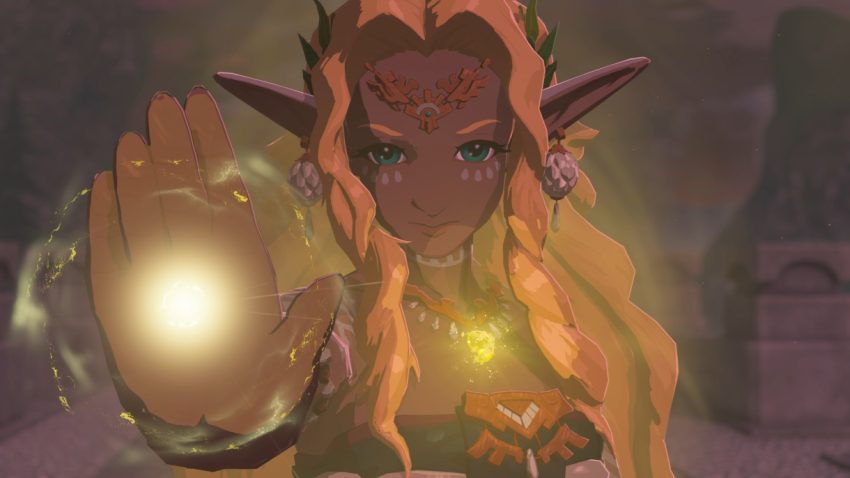
A Quest for the Ages
As with its predecessor, Tears of the Kingdom will pretty much allow the player to progress through the game with their own intention. However, it could be argued that this title does a much better job of pointing you in the right direction should you want to experience the quests as the developers intended. The game’s first major objectives send Link in specific directions, and from that point, the main quests seem to just fall into the player’s lap accordingly. Even better, these major objectives tie in extremely well with Tears of the Kingdom’s overarching quest so that the player usually feels like they’ve come full circle by the point of conclusion.
The main quests are truly the game’s meat and potatoes, and a huge amount of growth and world traversal is involved with them. Developers have packed a lot into this part of the adventure, so the player will have plenty to chew on as they cultivate relationships with NPCs, discover dungeons at new heights, and seek their favorite weapons in the mysterious unknown. One must be careful though, as it’s too easy to become sidetracked by some other interesting quest path than the one you’re currently on — not that we’re complaining with the sheer amount of content the game boasts! With each corner the player turns, they will be rewarded for their curiosity, be it with a weapon or garment, an NPC interaction or easter egg, or something even better to help them on their way.
Shrines return in this title, and continue to act in an unofficial quest capacity as Link uses them to build his strength up, practice using his abilities, and reap their smaller associated rewards. Shrines definitely don’t feel like the same old thing as before, simply because of the numerous solutions involved with bringing them to completion. Tears of the Kingdom has done well to ensure that players are kept engaged in this respect. The same is true for collectibles, especially in the form of Korok Seeds, which have also made a return. Players might feel disinclined to really invest in the task of collecting these elusive seeds until they see their precious new hiding spots – not to mention the definitively inventive ways of gathering specific seeds.
The game also succeeds in making side quests in general feel a lot more exciting, especially because NPCs that deliver them actually move around and seem to do more than just wait for Link to arrive. Because of this, Hyrule actually feels as though it’s breathing, and that adds a certain dynamic that would be sorely missing otherwise. Fetch quests come part and parcel with most Zelda games, so there’s no change there, but this title offers bigger rewards for laborious work and incorporates lore even in smaller tasks, which is enticing for the series’ lore-masters, to say the least.
Talk of lore brings the subject Tears of the Kingdom’s story. Breath of the Wild felt like an enigma for those truly interested in how and when events unfolded, but its successor uses story to help players guess just where it might lie on the official timeline. The guesswork really lies in-between the lines of what you see on the screen and what you already know from the series’ history, so those with an active interest will be kept busy.
On the face of things, visually, the story is a work of art. Characters come alive in cinematic detail through the familiar concept of Memories that were seen in Breath of the Wild. Through this, the player will easily fall in love with protagonists both old and new, and they will be left with a serious impression from antagonists. Those NPCs that feature in the overarching story literally ooze their own distinctive personalities and inspire feelings with each cutscene. A notable observation, however, is that if memories aren’t unlocked in the order intended by developers, players might come upon surprising revelations too early in the game, or they might miss crucial exposition until later in their adventure. If this happens, the story experience loses something quite spectacular, which is a huge shame.
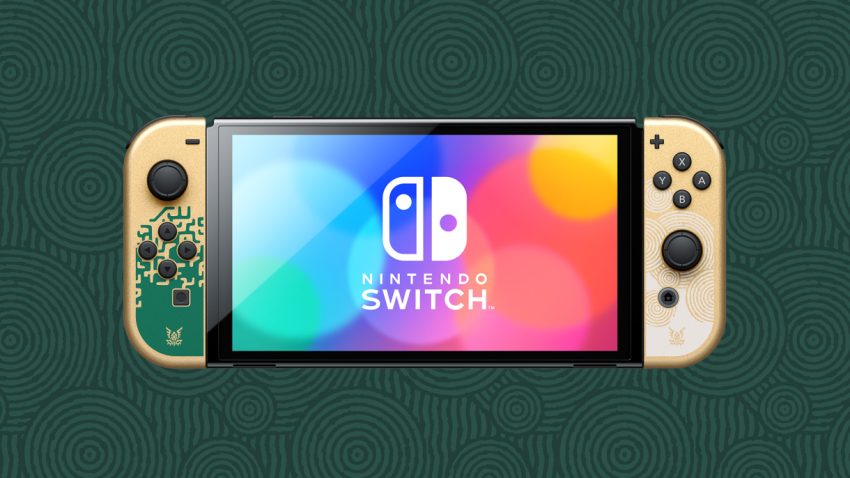
The Technicalities
Tears of the Kingdom packs a punch, all things considered. The size of the map, its contents, and everything the player decides to do in real time place demand on the Switch’s hardware, and somehow it still manages to capture 30 frames per second… the majority of the time. There are some more noticeable issues when using Link’s abilities, such as when a Recalled object doesn’t move as a whole. Or when encountering mobs of enemies, their actions aren’t entirely fluid. And sometimes, when looking into the distance, the horizon strives to catch up. But for the most part, performance is technically stable. This review encountered a few bugs, such as Link continuing to drip with water even though he should have dried off some time ago, but we would be willing to write that off as sweat in the grand scheme of things. Ultimately, Tears of the Kingdom is as polished as one could expect for a game that incorporates the features it so singularly boasts.
Our Verdict
Tears of the Kingdom takes the familiar and revitalizes it, encouraging curiosity at every turn. Similar to some of its predecessors, it smashes the barriers of gameplay mechanics, fundamentally changing how video games can be played for the next decade, at least. Brimming with action and distraction, the adventure will be enough to satiate even the most demanding gamer, while the game’s mysteries and story should delight even the most ardent fan. Tears of the Kingdom triumphantly fulfils every expectation and is certainly Nintendo’s biggest achievement to date.
Zelda Dungeon Score: 9.5/10
Reviewed on: Nintendo Switch
Credit: Editor-In-Chief Rod Lloyd, Managing Editor Judy Calder, and Copy Editor David Lasby contributed their own gameplay thoughts to this review. Thanks to their input, we’ve been able to bring you a more well-rounded analysis of Tears of the Kingdom with evaluation from a diverse group of critics.

Judy Ann Cooper is the Managing Editor at Zelda Dungeon. She joined the ranks back in 2018, bringing some good old British charm to the table.
Contact: judy.calder@zeldadungeon.net



